Silent Stallion: Driving an All-Electric 1965 Ford Mustang
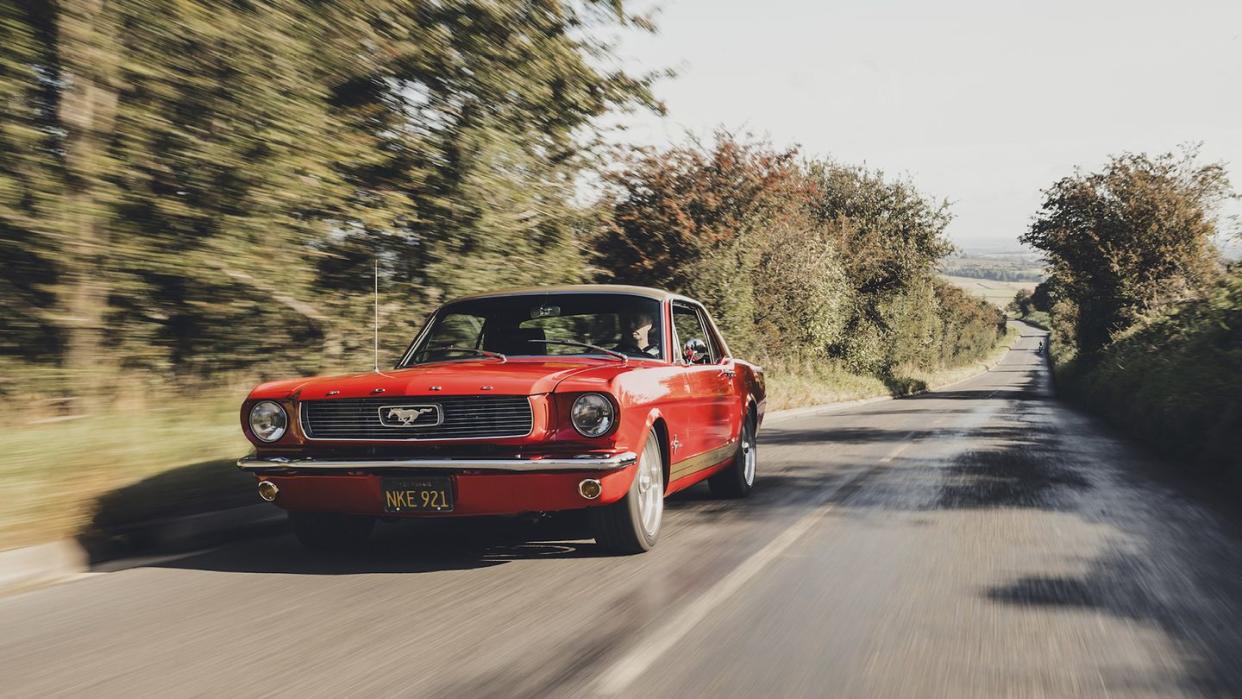
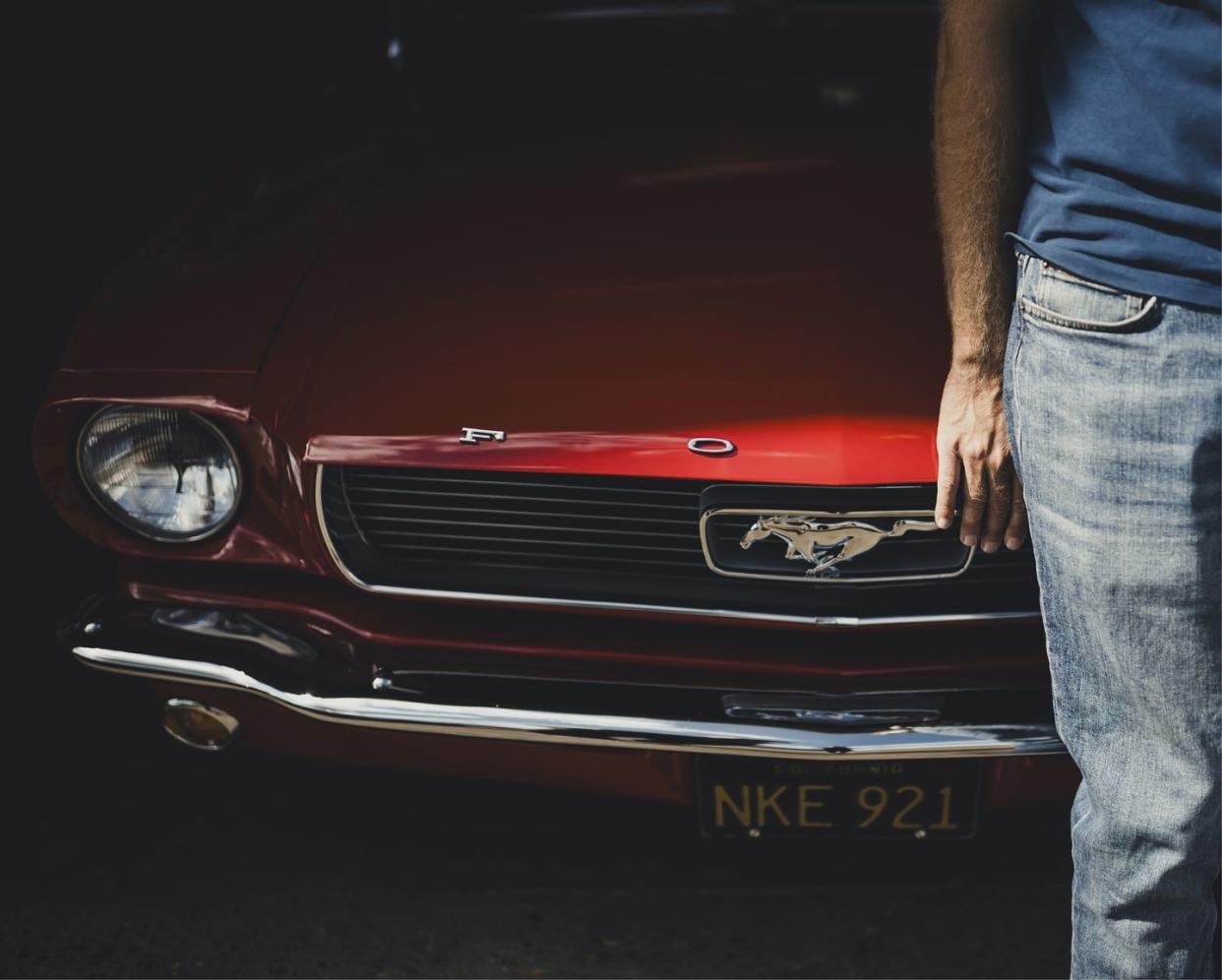
This is the story of two Henry Manns. One is a successful entrepreneur and car nut from Philadelphia. The other is a Brit, son of Alan Mann, whose race team ran much of Ford’s factory European competition in the Sixties. That’s everything from twin-cam Escorts to GT40s. Alan Mann died in 2012, and Henry now runs the family business prepping cars for historic racing.
This story originally appeared in Volume 20 of Road & Track.
The two Henrys met thanks to Ford. American Henry had bought one of the Alan Mann Heritage limited editions of the modern GT, finished in the same red and gold livery as the Sixties racers. He met British Henry at that car’s official unveiling at the 2022 Chicago Auto Show. The two namesakes found no shortage of things to talk about. Both were especially drawn to the F-100 Eluminator, the electrified 1978 Ford F-100 pickup that shared the stand, and discussion turned to the idea of doing something similar to a classic Mustang.

Things escalated quickly. Now, barely a year and a half later, Road & Track is getting the exclusive chance to drive Alan Mann Racing’s ePower Mustang in England before it gets shipped to the U.S.
This machine is both a car and a proof of concept for what Philadelphia’s Henry Mann hopes to turn into a business—a high-end conversion kit that can electrify any ’64, ’65, or ’66 Mustang without major surgery. British Henry has led the engineering project and lent his family’s famous name, but the first car has been built using the expertise of two other U.K. companies: The powertrain is by EcoClassics, and the radical new suspension is by Rock Engineering, founded by a pair of former Formula 1 engineers.
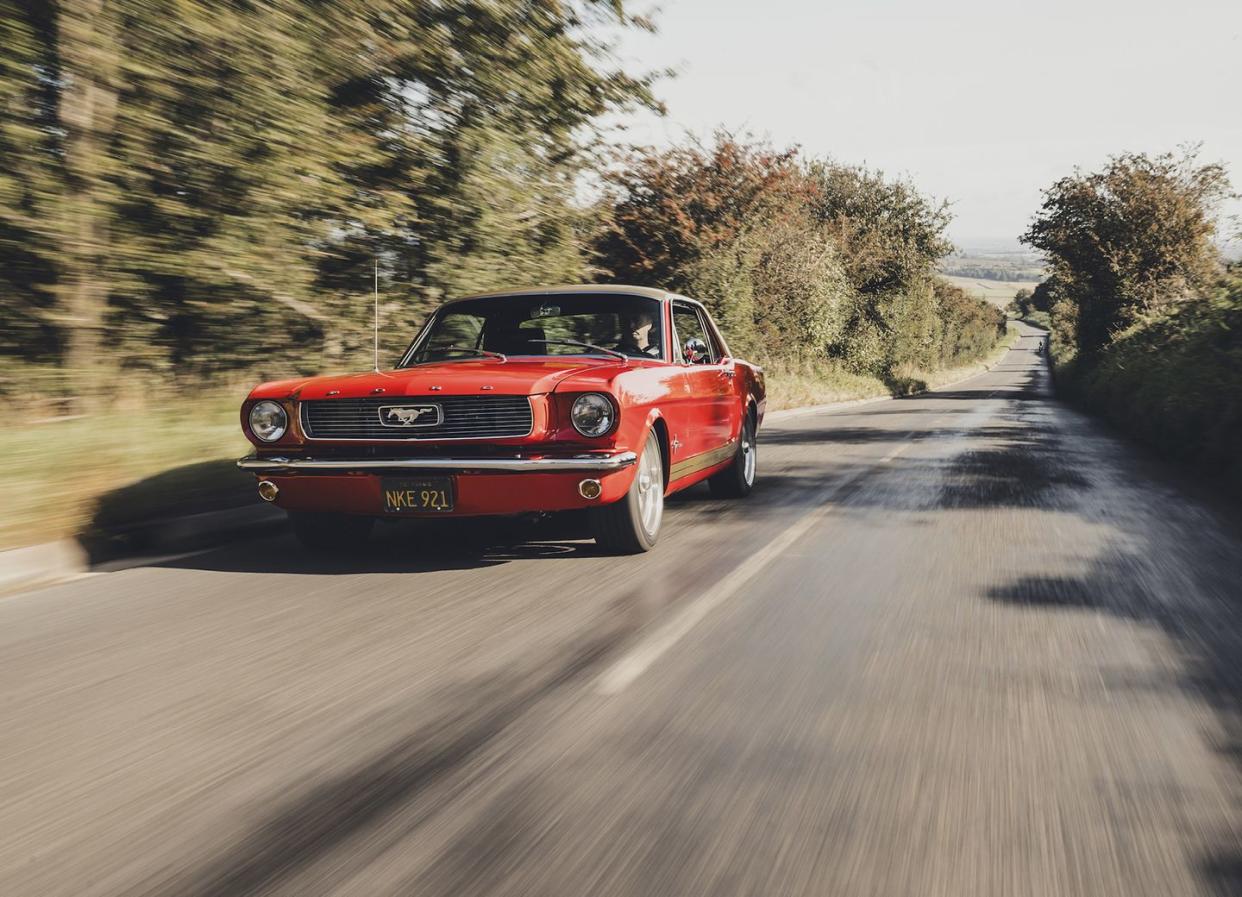
There are few signs, on the exterior and interior, of the powertrain conversion. Beneath its jazzy paintwork, the ePower looks like a subtly modified ’65 hardtop—lower than stock, riding on 17-inch wheels, with 11.7-inch brake discs visible between the spokes. Barring the absence of a tailpipe, there are no exterior clues that this Mustang runs exclusively on electron flow; the charging port is hidden behind the fold-down front license plate. Inside, the original Mustang instruments have been repurposed, with the four smaller dials reporting on battery charge and voltage, plus temperatures for the water-cooled motor and cell pack. It also gets a touchscreen interface, central air vents, and a pair of cup holders, modern touches that could be applied to any restomod, electric or otherwise.
But the chance to inspect the ePower’s underside as it sits raised on a ramp in the Alan Mann Racing workshop shows how radical the surgery has been. There are two battery packs: the larger in the former engine compartment, the smaller where the fuel tank went. Combined storage capacity is about 72 kWh. The motor, rated at 255 hp and 229 lb-ft, sits where the stock gearbox would have gone and sends torque to the rear axle through a driveshaft.
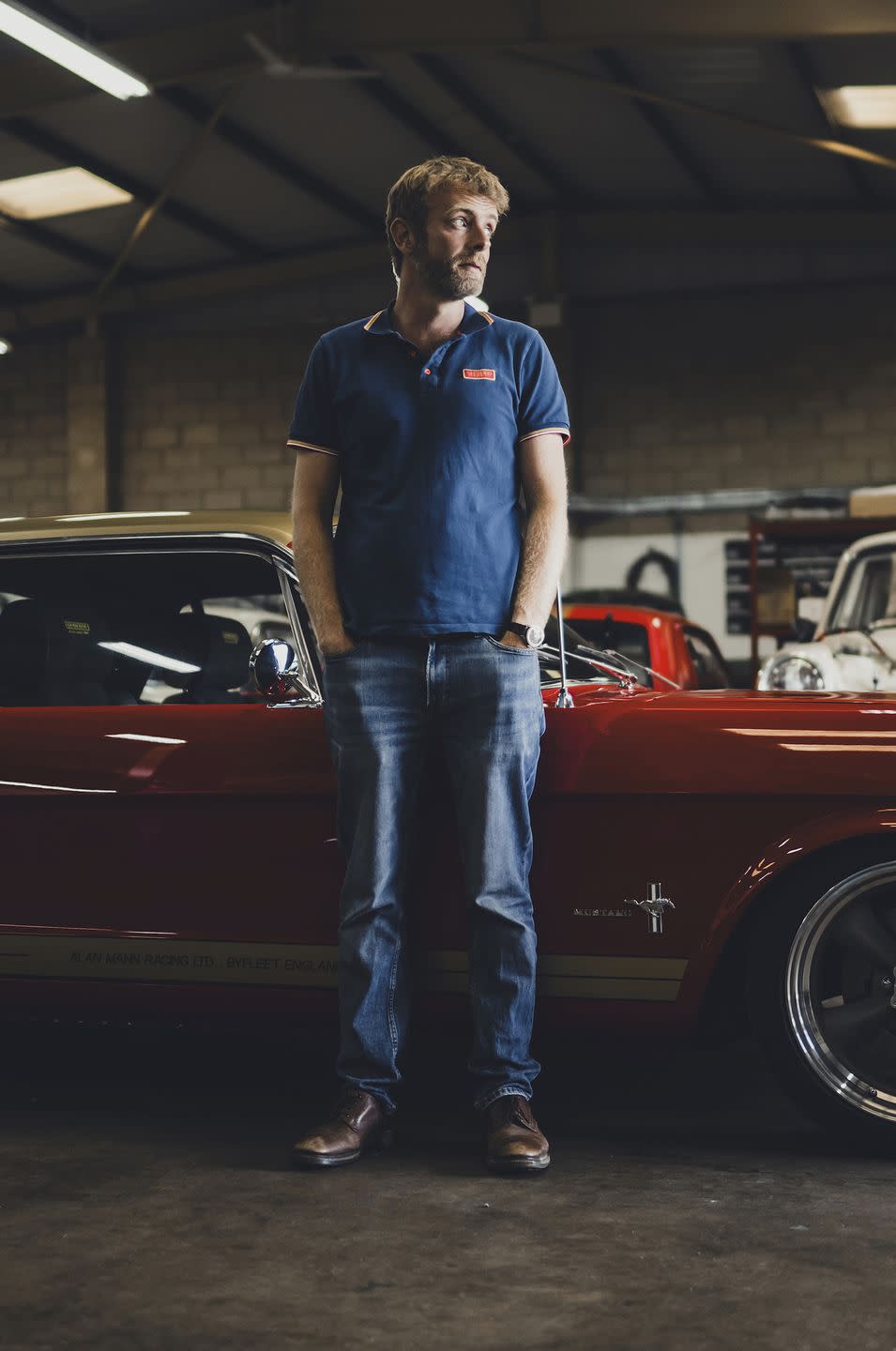
An equally significant transformation has been made to the structure and chassis. The ePower has new front and rear subframes that bolt to the original shell and carry double-wishbone suspension at each corner, plus a bracing section to link them together and improve rigidity. It also has a steering rack at the front in place of the original steering box and a modern limited-slip differential from a last-gen S550 Mustang at the rear. The conversion has added mass, but not a huge amount. At 3250 pounds, the ePower is about 250 pounds heavier than the original V-8-powered car but almost 500 pounds lighter than a modern Mustang GT.
No surprise that the ePower driving experience is doubly different, with the new suspension being nearly as big a change as the electric powertrain. The lack of combustion noise takes some getting used to, as does the absence of the sort of muscular vibration a six-cylinder or a V-8 would make. With the ignition switched on, all that is required to get moving is a forward push of the central direction selector, with the motor then giving an idle-creep effect similar to a torque-converter auto.

The accelerator pedal is nicely weighted and has soft initial responses to help smoothness. The car can be driven at regular street speeds using no more than the top inch or so of travel. Pushing harder immediately delivers bigger accelerative forces but also a greater sensory disconnect, given the lack of noise. There is a slight motor whine and a hum from the differential but no fake soundtrack—the car will ultimately play a low-speed compliance noise to warn of its approach. Sound deadening has been significantly upgraded to help suppress other noises an engine would normally mask.
British Henry said the team deliberately didn’t opt for big power to stay close to the power-to-weight and torque-to-weight ratios of the original car. The lack of gearchange punctuation means the ePower feels at least as potent as an original V-8 Mustang. R&T’s drive took place before any performance testing, but the prediction is a 0–60-mph clocking under six seconds. The ePower won’t be winning quarter-mile races, though—the prototype’s top speed is limited to just 85 mph, and the production version’s to 97 mph. On the plus side, the ePower managed repeated bursts of hard acceleration without any sense of the powertrain derating, and the mild regenerative braking through the motor integrated seamlessly with the powerful disc brakes.
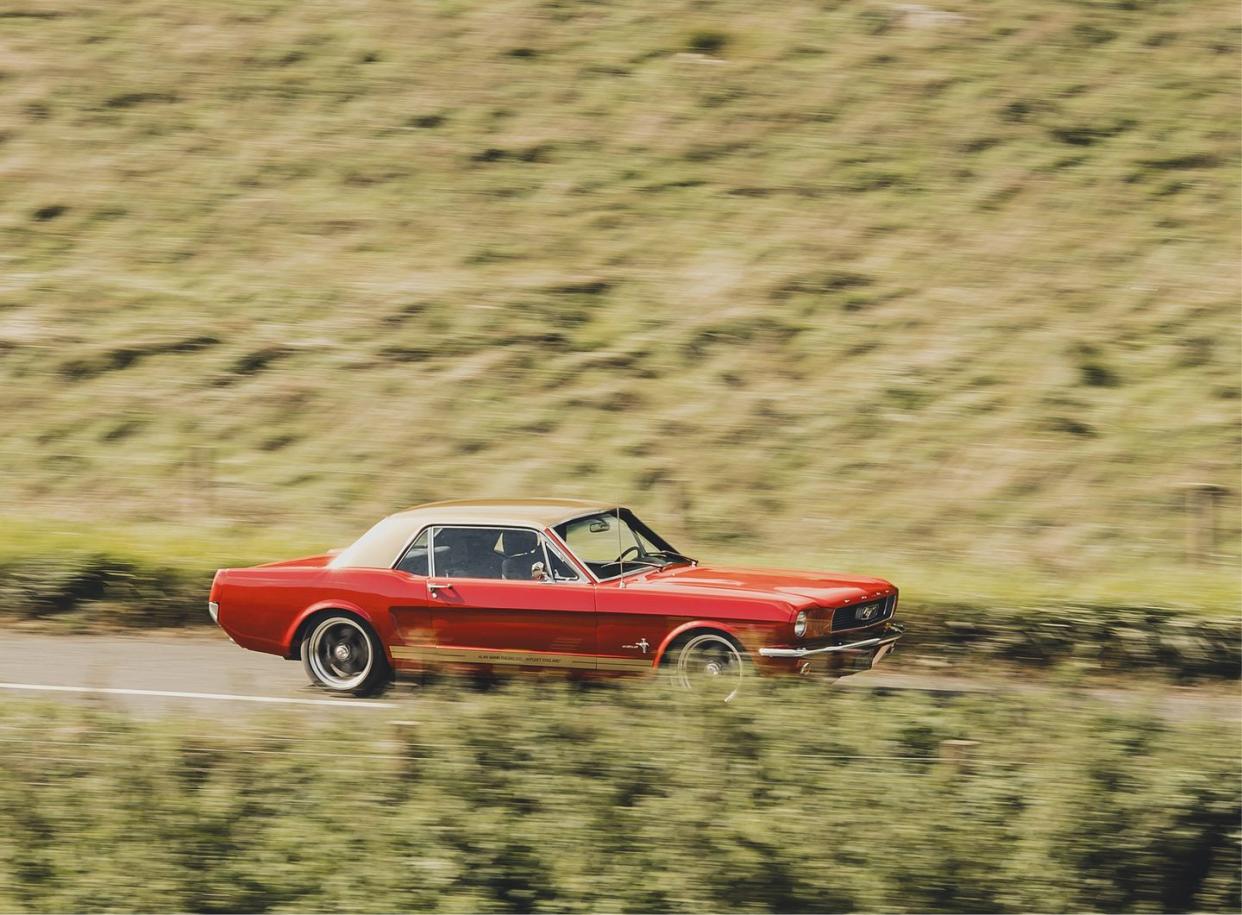
The ePower also drives with much more precision than any stock Mustang up to at least the end of the 20th century. Thanks to the new suspension, the ePower copes with rough English back roads far better than many modern sports cars, without contact between tires and bodywork when pushing hard. The settings are firm rather than luxurious, but the body is kept under tight control, without floatiness. Alan Mann Racing’s expertise in setting up race cars is obvious.
That extends to the steering. The new setup lacks the vague straight-ahead that was inherent with the original steering box. Responses are now crisp, and feedback is good, although the lack of assist makes it heavy at parking speeds and when turning into tighter corners. The biggest issue is a lack of steering lock brought on by the need to fit wheel travel around the new subframe. British Henry says some form of low-speed electric power assistance is being considered, which will at least make five-point turns easier.
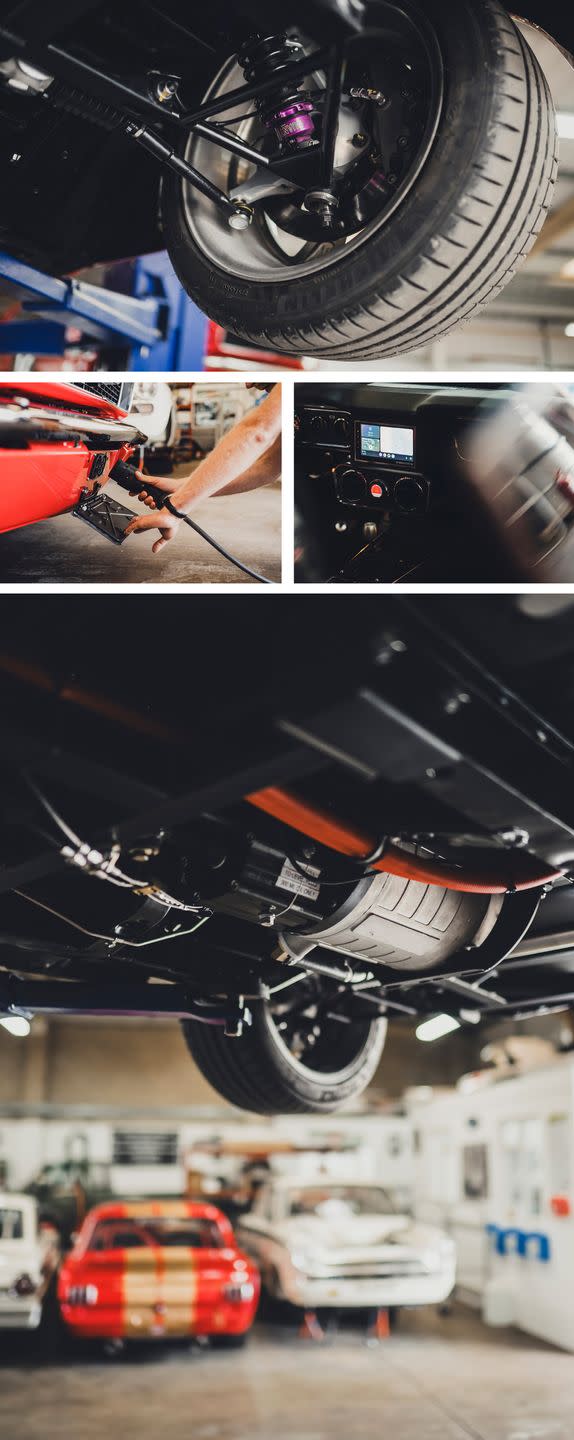
But why would you choose to do this to an original Mustang, especially when you would likely have to spend more than $200,000 on a conversion to this standard? From an experiential point of view, there is something obviously missing; near silence suits the Mustang surprisingly well but not as well as a big, old-fashioned combustion engine does.
But American Henry—who has written the sizable checks necessary to get the ePower to this point—makes the case for it on grounds other than the usual environmental ones pushed out for electro-conversions.

“I thought, What would I like myself?” he says. “It’s a classic that’s easy to drive and isn’t going to leak oil or require huge amounts of work on a regular basis. It’s an early Mustang you can you can drive every day—something you use where you wouldn’t take another classic.”
If he can persuade enough affluent buyers to share that vision, he’ll have a business too.

A car-lover’s community for ultimate access & unrivaled experiences.JOIN NOW Hearst Owned
You Might Also Like
